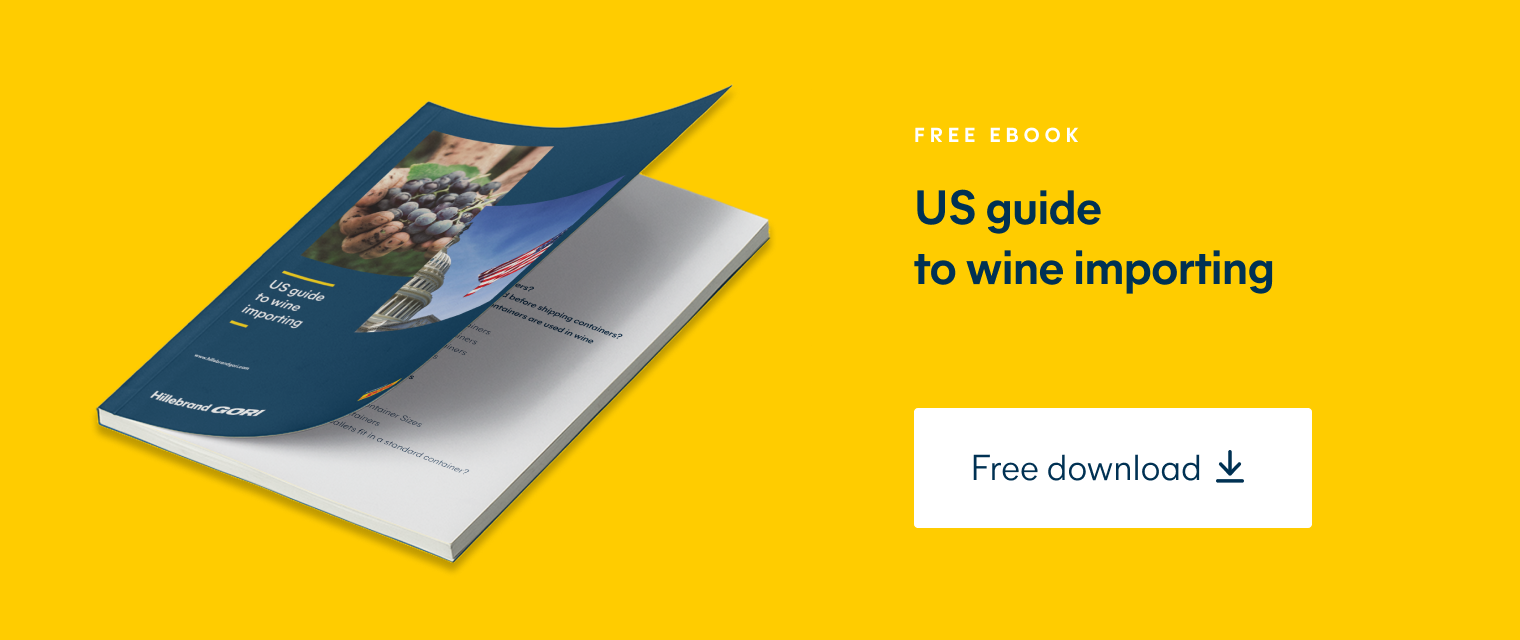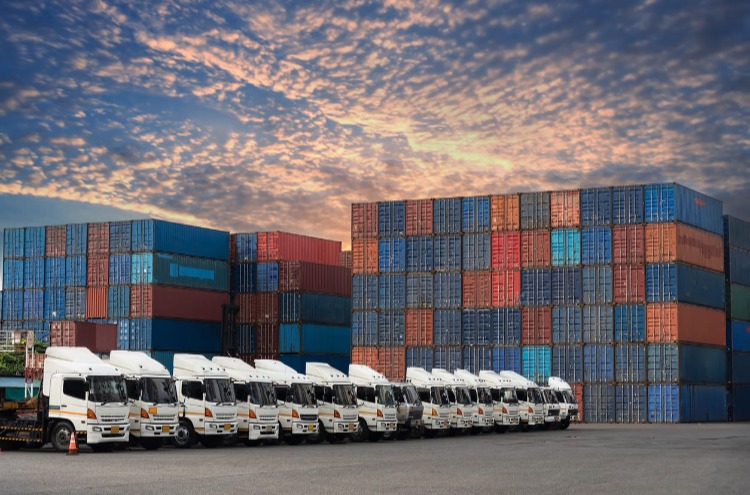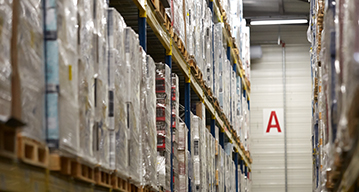Share this post
Lean logistics for wine importers: Do you know what it is?
Table of contents
- What is lean logistics?
- What are the key principles of lean logistics?
- What does a lean logistics supply chain look like?
- What are the benefits of lean logistics?
- Case study of a lean logistics approach helping to make shipping internationally more efficient
- Case study of using lean logistics to reduce warehousing costs
- Expert supply chain management
Supply chain management can help you avoid bottlenecks in your fulfillment processes, keep costs down and adapt to changing consumer needs. Lean logistics is one end-to-end supply chain management principle you can take, which can help you boost your supply chain efficiency by cutting out waste and maximizing customer value.
What is lean logistics?
A lean logistics strategy is an approach to supply chain management that means being responsive to customer demand and trends, having the agility in your supply chain to respond to these needs while identifying and eliminating the non-adding value processes and activities. A key part of lean logistics is having the stock quantity that you need and can sell at the right moment and location. There are various strategies you can use to achieve this, often in combination. Moving to a lean logistics system typically also involves optimizing and aligning both your digital and operational processes. So what are the key components of a lean logistics strategy?
What are the key principles of lean logistics?
The key principles of lean logistics that can help ensure your supply chain is agile and efficient are:
- Identifying customers needs: identifying what your customers needs are, means you can pinpoint what value and requirements you should aim to provide and fulfil. This in turn forms the basis for assessing which aspects of your supply chain need improving.
- Reducing waste: mapping out your supply chain processes allows you to identify the parts that are and aren’t adding value. ‘Wasteful’ parts of the chain might include services and features that are not required and/or activities/processes defined in a way that can cause delays, excess stock, extra admin or inefficient lead times.
- Improving product flow: rethinking the steps and processes in your supply chain, to reduce lead times, improve the flow of information and minimize delays.
- Reducing stock levels: ordering stock to meet demand on time, rather than storing excess stock will reduce warehouse costs, free up cash and enable you to react quicker to market trends. Gaining a better understanding of supply and demand will therefore allow you to create a lean logistics business.
- Enhancing collaboration: improved communication and information sharing between parties in your supply chain allows you to align the end-to-end supply process and better meet customer demand.
What does a lean logistics supply chain look like?
Lean logistics is about delivering your wine in the most efficient way possible. Transport, inventory and warehousing can all be made leaner by managing your logistics effectively. Removing inefficient elements of your supply chain can reduce the lead time from the winery to the customer, making your business more agile and more profitable. Here are some supply chain strategies you can use to achieve a lean supply chain:
EDI shipping
Placing orders through an Electronic Data Interchange (EDI) system, such as myHillebrandGori, can help you achieve greater efficiency in your operations. In simple terms, EDI facilitates the exchange of documents between two parties using a standard electronic format. EDI is used to manage the documents required for purchase orders, bill of ladings, shipping information, customs documents, and more. EDI automatically generates and downloads the documents, making sharing data quick and easy.
API Shipping
Managing orders and inventory using Application Programming Interface (API) technology to share data can also help make your processes leaner. API is a software interface that connects a range of cloud platforms, hardware and software, allowing you to link up to your logistic provider’s digital system. Using API, tech-savvy shippers can quickly and easily transfer data and receive updates on a shipment.
Cross-docking
Cross-docking can also form part of a lean logistics strategy. Cross-docking involves unloading goods from incoming vehicles and loading them directly onto outbound vehicles for delivery, with no storage time in between. Employing cross-docking in your supply chain can help to reduce costs, cut handling times, improve efficiency and remove the need for long term storage. This can help you respond more quickly to changing needs, such as changes to packaging and delivery vehicles.
Less than container load shipping
Less than container load (LCL) shipping , sometimes called groupage, is an efficient and cost-effective shipping method. It allows you to send smaller shipments, e.g. just one pallet of wine, which shares the transport costs between multiple shippers. By having less cash tied up in stock and transport costs, LCL can make your return on investment faster. Depending on the quantity you ship, you also may not even need to pay for warehouse storage for an LCL shipment.
What are the benefits of lean logistics?
Lean logistics should be viewed as a long-term process of improving quality and reducing waste, involving every aspect of your business. Broadly, achieving these will in turn help you to:
- Respond to consumer trends
- Reduce lead times
- Lower costs
- Improve efficiency
But each business has unique goals, needs and processes, and requires unique supply chain management solutions. Here’s how we helped two wine businesses make their processes leaner.
Case study of a lean logistics approach helping to make shipping internationally more efficient
When providing supply chain management advice and solutions, we begin with examining every step of the process, from order to delivery. This includes how you move your wine, the quantities you transport, demand for your products and peak seasons to find the logistics strategy that’s right for your business.
Here’s an example of how we provided cross-docking and consolidation solutions for a US wine and distilled spirits importer, to tackle the complexity of managing varying weight load limits in their export and import countries.
The challenge
The variation in weight limits in export and import countries make payload complex to manage and lead to inefficiencies in transportation.
Our solution
We recommended signing up to our HWP (heavy weight program), which included setting up an East Coast US warehouse location to unload/load to optimize their payloads. This allowed the importer to manage any surplus by providing greater visibility of their stock.
The benefits
By ensuring that their containers traveling to the East Coast warehouse can be fully loaded, this strategy reduced their transport costs per case by 5%. This also gave them greater order flexibility, allowing them to place their orders either with the east coast warehouse, or directly with the supplier, depending on what is more convenient. Finally, this system provided a platform to consolidate their shipments at the destination.
Case study of using lean logistics to reduce warehousing costs
Working with us to make their operations leaner has helped another of our clients, a beverage manufacturer and distributor, to lower their warehousing costs.
The challenge
A lack of visibility on their stock levels and lead time records on their import flows made providing outstanding customer service expensive and difficult.
Our solution
We increased visibility of their inbound transportation by providing all the information they needed in one portal. Our shipping management solution, MyHillebrandGori, also allowed them to manage their orders and flows more efficiently, during transport, customs brokerage and warehousing.
The increased stock visibility and traceability allowed them to provide accurate lead time information to customer service teams in the US. Finally, standardizing their processes and IT for US imports helped to streamline their shipping processes.
The benefits
These changes resulted in dramatically improved customer service, and the number of shipments arriving on time in full increased by 97%.
Their visibility on orders, stock in transit and in US warehouses also improved, while process check points and exception management increased their proactivity.
These steps increased their lead time accuracy on trade lanes, led to an improved availability of products in our East Coast warehouse, and ultimately reduced their customer service costs.
Expert supply chain management
If you’re looking to make your freight forwarding process and logistics leaner, we offer specialist supply chain management solutions for wine and alcoholic beverage businesses. We can help you make the move to lean logistics, providing in-house solutions tailored to your business needs. For a complete lean logistics solution, get in touch for a quote, or contact us for more information.
Published 30th August 2023, updated 21st November 2023.
To successfully implement lean logistics, you will need a logistics partner with the right warehouses and knowledge to set up the processes within your supply chain.
The timeline varies based on the size of the business, the level of implementation and the current state of operations. However, businesses can see noticeable improvements in efficiency and cost savings within the first few months. Significant transformation and long-term benefits can take longer.
The first step is understanding your current processes and identifying areas for improvement. This can involve analyzing your supply chain and identifying inefficiencies. Working with experienced professionals to create a solution and new process to implement is the next step. Continuous monitoring and improvement are also key to successful implementation.
Both aim to reduce waste and increase efficiency. Streamlining processes and reducing unnecessary transportation or storage, which can reduce your carbon footprint. Incorporating sustainable materials and energy-efficient practices also helps.
How can we help your business grow?





